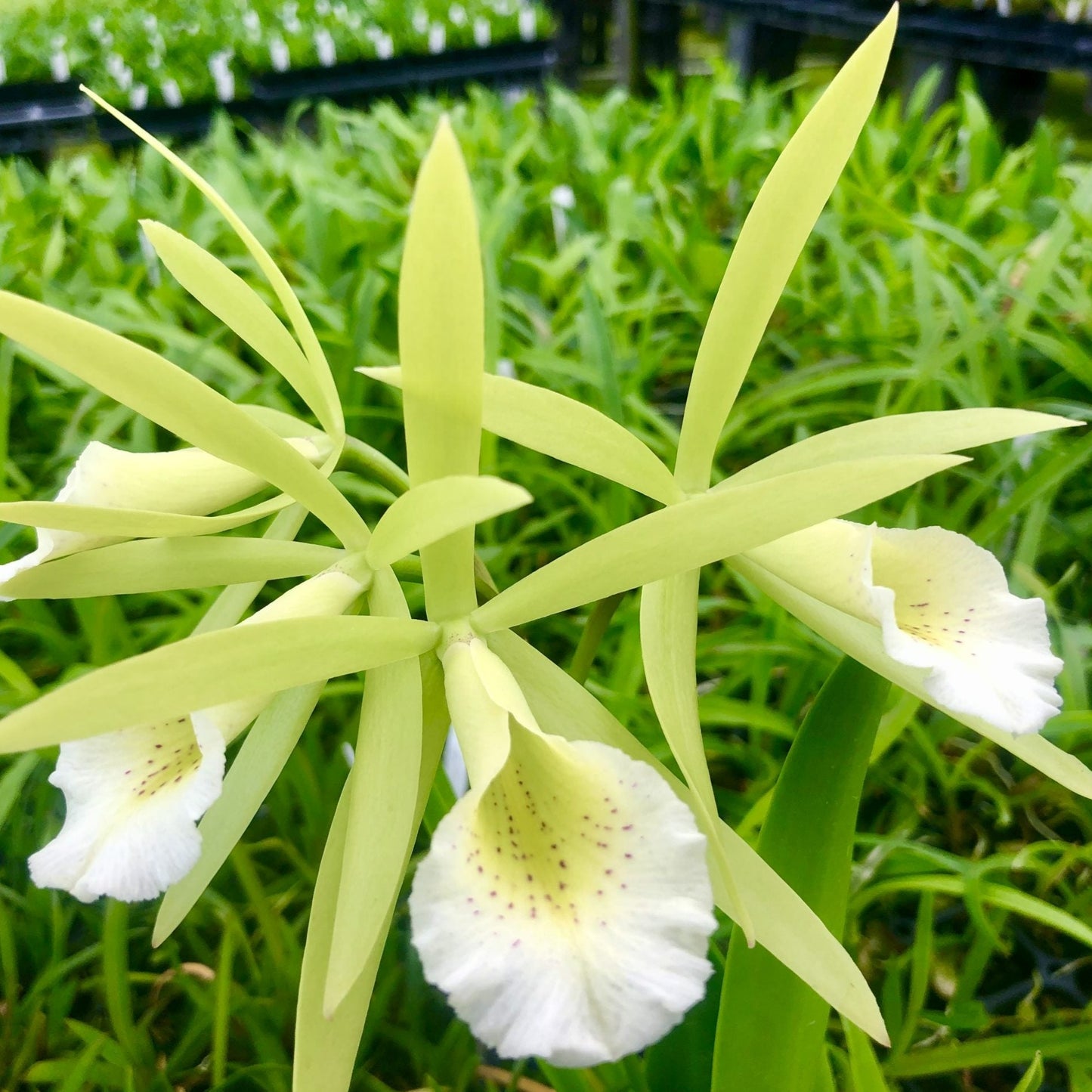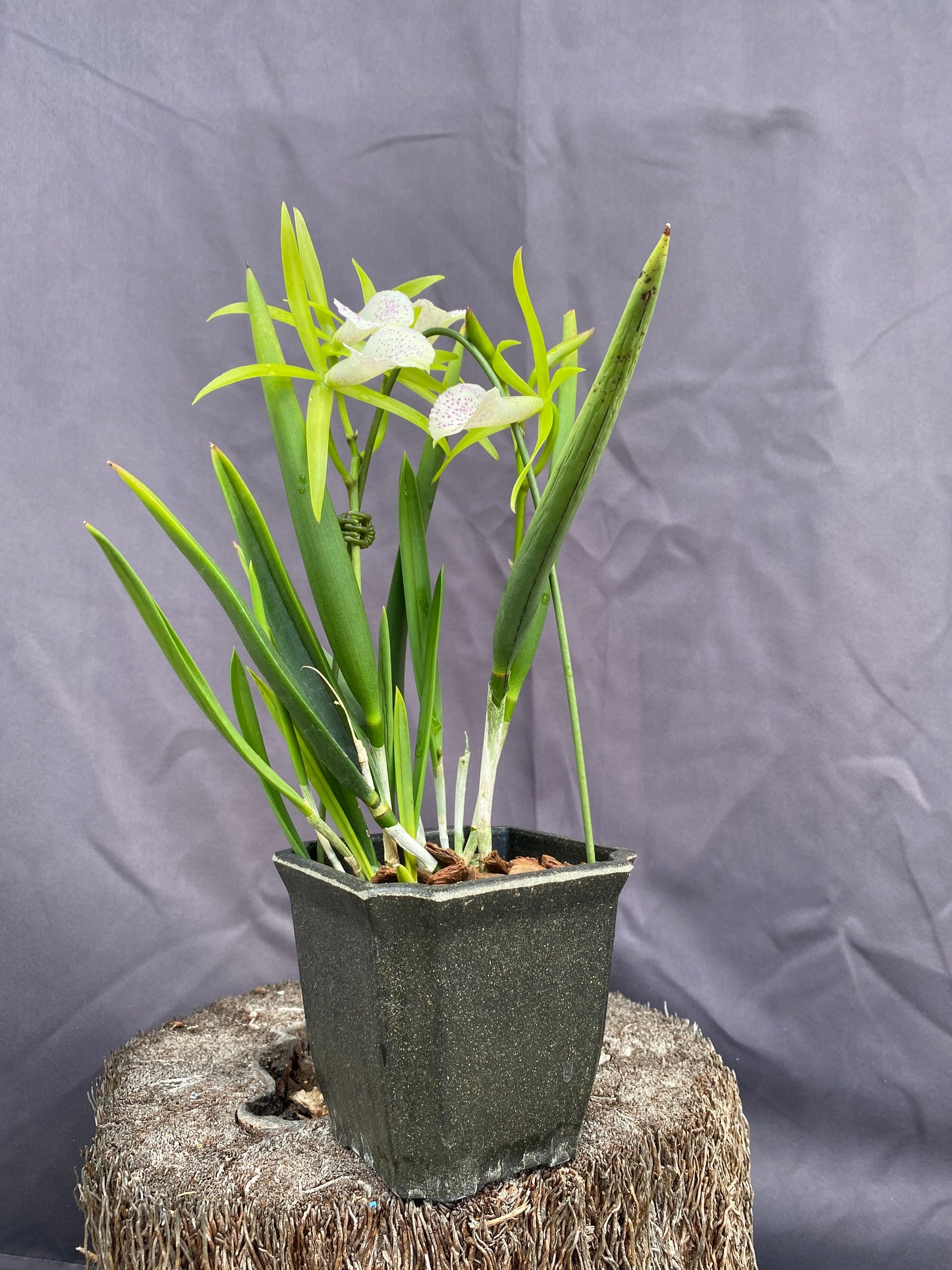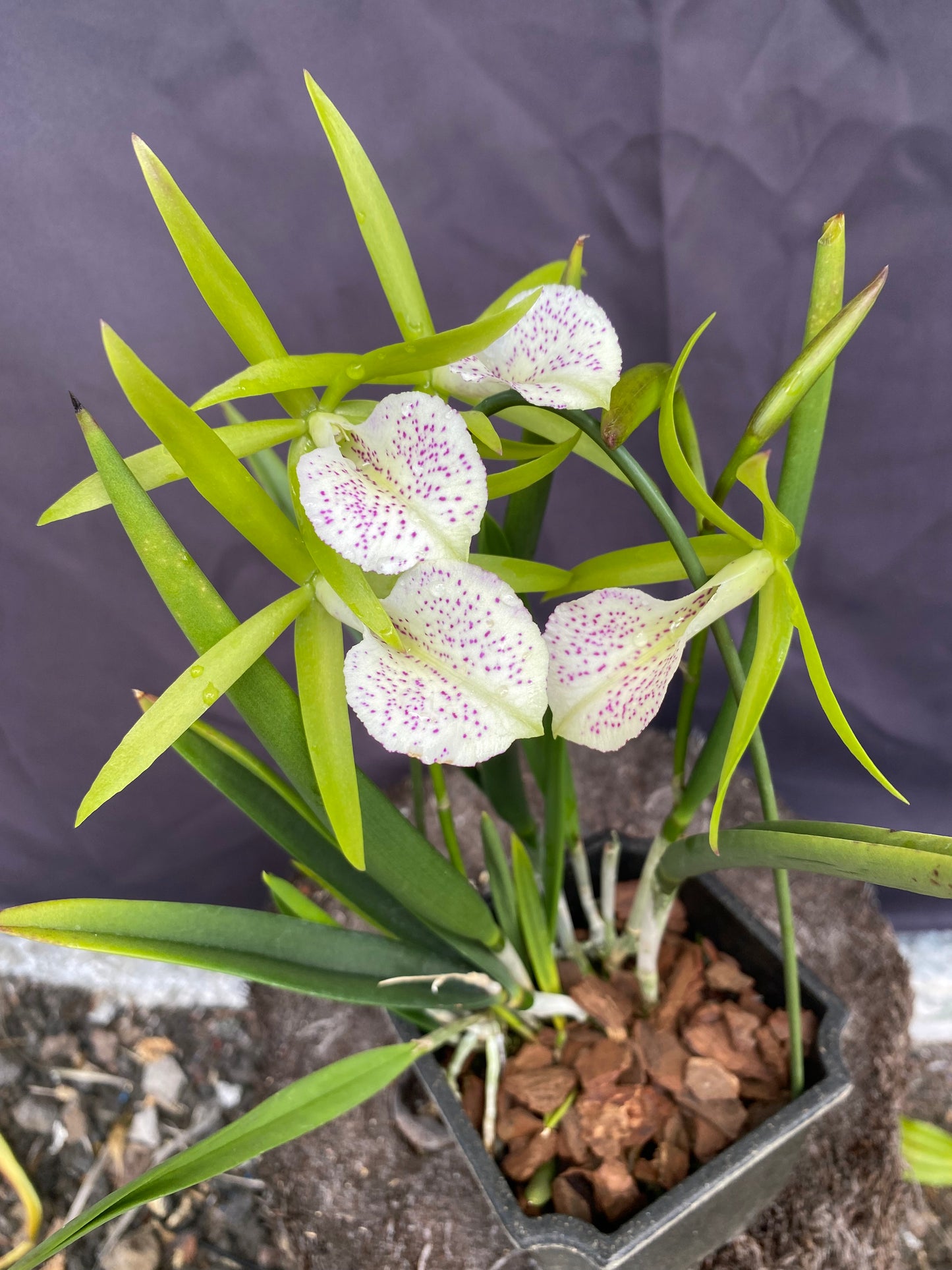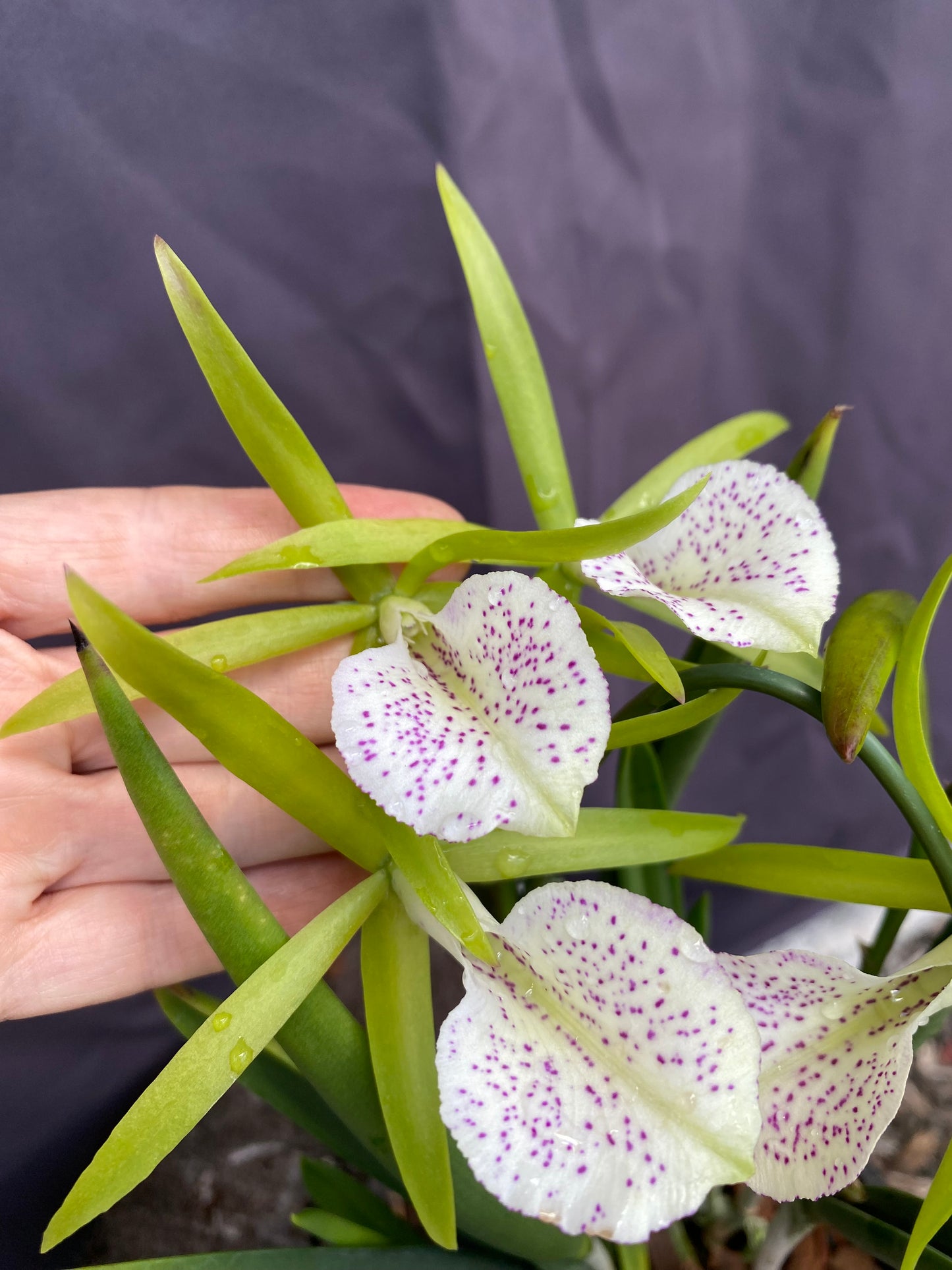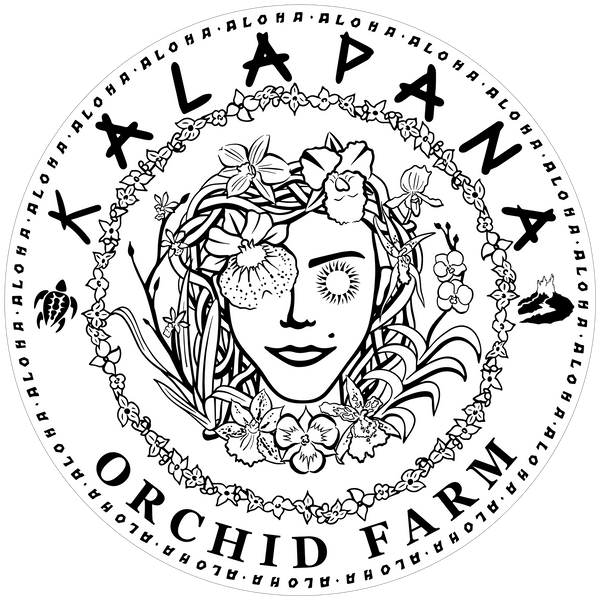Kalapana Orchid Farm
Procatavola Key Lime Stars
Procatavola Key Lime Stars
Couldn't load pickup availability
Prepare for a treat with Procatavola Key Lime Stars! This lovely hybrid gets its name from the striking, star-shaped flowers that bloom in a captivating lime-green color. It's truly a delight, reminiscent of a refreshing slice of key lime pie, only without the calories, thank goodness!
This modern hybrid, registered by R. Tokunaga in 2019, is a cross of Cattleychea Lime Sherbet and Brassavola nodosa. Delving into its lineage, Cattleychea Lime Sherbet itself is a hybrid of Cattleya forbesii and Prosthechea mariae. So, tracing it back to the species:
Brassavola nodosa: Often called the "Lady of the Night" orchid for its incredible evening fragrance, this species is widespread, found growing epiphytically from Mexico down through Central America to Brazil and Argentina, and across the West Indies. It thrives in warm to intermediate conditions.
Cattleya forbesii: This species hails from Brazil, typically found growing epiphytically or lithophytically in coastal forests, often near water, at low elevations. It prefers intermediate to warm temperatures.
Prosthechea mariae: A Mexican native, this species is typically found growing epiphytically in humid oak and pine forests at elevations from 3,300 to 5,000 feet, experiencing intermediate to cool temperatures.
Procatavola Key Lime Stars produces stellate (star-shaped) flowers, typically about 4 inches across. The sepals and petals are a bright, clear lime green, often with a waxy texture, giving them a delightful crystalline appearance. The prominent labellum (lip) is a contrasting pale yellow-green, transitioning to a vibrant lime-green throat that is often spotted with charming burgundy markings. The column is also lime green, with a white tip and a yellow-green anther cap. It produces a soft, citrusy fragrance that becomes more noticeable as evening approaches – a lovely nod to its Brassavola nodosa parentage.
The plant itself is compact, generally reaching 6 to 8 inches in height. It has stiff, leathery, narrow leaves. It's a vigorous grower, and while younger plants might produce one or two flowers per inflorescence, mature specimens can become quite prolific, blooming in clusters of several flowers. It's known for being a free bloomer, with flowers lasting four to six weeks, and can produce multiple flushes of blooms throughout the year. In fact, this lovely hybrid has garnered quite a bit of attention, receiving 17 AOS awards since its registration, including an AM/AOS for 'Bayou Moon' with 80 points.
Care Instructions
Light: Bright, indirect light is ideal. Think of a location with strong filtered light, such as an east-facing window or a shaded south or west window. Avoid direct, harsh midday sun.
Water: Allow the potting medium to become nearly dry between waterings, then water thoroughly until water drains from the bottom of the pot. Reduce watering slightly during cooler, less active growth periods, typically in winter.
Temperature: This orchid thrives in intermediate to warm conditions. Maintain daytime temperatures between 65°F and 85°F, with a night temperature drop of 10°F to 15°F, ideally staying above 55°F at night.
Humidity: Moderate to high humidity, around 50% to 70%, is beneficial. If your environment is dry, consider using a humidity tray or a room humidifier. Good air circulation is crucial to prevent fungal issues, especially with higher humidity.
Potting Medium: A well-draining, open mix is essential. Fine to medium bark chips, mixed with perlite or charcoal, work well. Sphagnum moss can also be used, but require more careful watering to avoid overwatering.
Fertilization: During periods of active growth (spring and summer), fertilize every two to four weeks with a balanced orchid fertilizer diluted to half strength. Reduce or suspend fertilization during the cooler, less active months. Flush the pot with clear water once a month to prevent salt buildup.
Share

